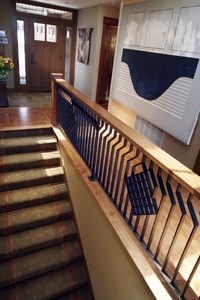We share tips on how to green-up your humble abode.
Green contractor Iris Harrell and her partner Ann Benson recently embarked on a journey to remodel their home. Their construction adventures were captured by Pam Walton for the upcoming documentary The Forever Home: Going Green (pamwaltonproductions.com).
Harrell recently shared a few green tricks the couple learned along the way.
Start with little green sprout:
Harrell has been getting gradually greener over the course of her lifetime and knows that nobody becomes John Muir overnight. “It’s not something that just happens to you and you wake up green.” She recommends working within your comfort zone. “If you fall in love with something that isn’t green, go for it and get two other green things. Don’t feel guilty about it,” she says.
Green does not (always) equal more green:
“People are under this myth that it’s going to cost more, that your home is going to look like a yurt when it’s done and that it’s going to be ugly,” which couldn’t be farther from the truth, according to Harrell. Greening your house can also increase its value and make it easier to sell. “All home sales are down, but green home sales have been less affected,” says Harrell “It’s a home that’s going to be less expensive to run and maintain and be more comfortable and healthier when you’re in it.”
Recycling is for more than cans:
Harrell repurposed her stainless steel sink, microwave and dishwasher from her kitchen to her laundry room. Former upstairs curtains were born again to dress up the storage area and they even reused the old cedar lining in the new closets. Harrell suggests looking for new uses for your old kitchen cabinetry, which can come in handy in garages or workshops. This concept can be applied to the entire house. “People call for additions and we help them figure out why they aren’t using the space that’s already there. We always find a room that people don’t use.”
Energy conservation saves your gold:
Harrell kept her old furnace and restored the duct work to an outstanding 93 percent efficiency. “It’s a very simple thing that people should be doing. In most homes 30 percent of the heat produced is leaking out the duct work.” They also have zoned heating, which allows the couple to heat just the rooms they are in, instead of the whole darn house. Cross ventilation keeps them cool without air conditioning. “It takes longer to condition the air than to exchange it.”
Create a cozy home for all:
According to Harrell, part of being green is having a home with “universal design features,” which means making your home livable for all ability levels. But many people are hesitant to include these features, according to Harrell. “They are afraid that they’ll have a house full of grab bars that looks like a hospital, but you can do it artfully,” she says.
